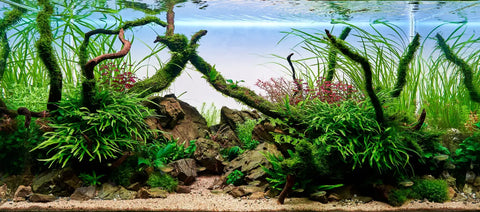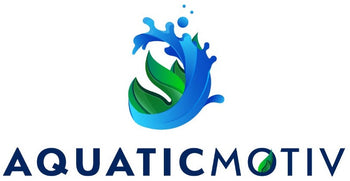Carbon dioxide, also known as CO2, is the most important macronutrient for an aquatic plant’s health. A macronutrient is a group of essential nutrients that plants use in large amounts. The 8 essential macronutrients are carbon (carbon dioxide), nitrogen (nitrate), potassium, phosphorus (phosphate), calcium, magnesium, and sulfur. These are the most heavily utilized nutrients that aquatic and terrestrial plants need for growth. For this article, an aquarium without
a form of CO2 supplementation is called a low-tech aquarium. While an aquarium with a form of CO2 supplementation is called a high-tech aquarium.
Within the hobby, the exact specifications of what is high-tech may vary and include supplementary fertilizer and high lighting, so this is not a concrete definition for the term.

The reason why CO2 supplementation has such a large effect on aquatic plants is because carbon is the limiting factor in low-tech aquariums. In low-tech aquariums, the CO2 part per million ranges from 2 ppm to 10 ppm. In high-tech aquariums, owners aim to create a CO2 level of 30 ppm to 35 ppm. The result of the extra CO2 in the aquarium is that you are no longer limited to lower light levels due to your carbon limitation. The main cause of algae and poor plant health in low-tech aquariums is carbon deficiency. This is because you can expose the aquatic plants to a high PAR (photosynthetically active radiation), but no matter how much light you add, the rate of photosynthesis that the plant uses will be limited by carbon levels.
Simply follow this guideline to know if your plants require CO2 supplementation to survive.
For low-light aquariums with PAR levels of 20 to 30 umols, you do not require CO2 supplementation. That level of light will be fully used in photosynthesis without any CO2 supplementation.
For medium-light aquariums with a PAR output of 30 to 50 umols, you may
require low levels of CO2 supplementation to allow the rate of photosynthesis to keep up with the moderate light levels.
For medium light aquariums a “Do It Yourself CO2 system” will be sufficient as large amounts of CO2 will not be required to balance this light level.
In high light conditions with a PAR output of 50 to 90 umols, a pressurized CO2 system, or a hybrid system is required to allow for enough available carbon to keep up with the high rate of photosynthesis this light level will cause.
Some of difficult plant species like Ludwigia white and Hygrophila chai and some other extremely high-light species also require CO2 supplementation. Usually, these require a minimum par level between 100 to 150 umols, which is only created by some of the best aquarium lights on the market.

Other than the required light intensity, two additional factors determine if CO2
supplementation is needed for a planted aquarium.
Planting density is the first factor which will determine if you require CO2 supplementation. In heavily planted aquariums, where most of the
substrate is covered in plants, the planting density will oftentimes require additional CO2 supplementation. As stated before, deficiencies in nutrients stop the plants from performing photosynthesis and give algae the opportunity to take hold. Once that happens, the consistent deficiency of CO2 will trigger a lack of chlorophyll production and white leaves along with consistently increasing levels of algae. Ultimately, these two results will be unsustainable for a healthy planted aquarium.
The second factor which can affect whether your planted aquarium requires CO2 supplementation is the rate of growth your plants exhibit. Some plants have a fast rate of growth despite low light levels. These are often labeled as easy beginner plants due to their rate of growth and low light-level requirements. In conjunction with the last point I mentioned, if you have an aquarium full of fast-growing species, there will be a significant chance that you'll experience a deficiency in CO2 once the plants grow in and reach a dense level of growth.

To wrap it up, I'll quickly restate the three times when you would become deficient in CO2 and in what cases you would need to add supplemental CO2 into your aquarium.
First is the light level which is directly proportional to the growth rate of the plant. Higher light levels will often trigger faster rates of photosynthesis and growth, eventually, that rate of growth will reach a point where the ambient CO2 level is not enough. You'll develop a carbon deficiency and find hair algae and possibly other types of algae from an excess of light and a deficiency of available carbon.
The last two points work in conjunction with each other, faster-growing plants will use more CO2 because even at a low light level they'll still grow at a decent rate. If you continuously propagate these fast-growing plants and fill your aquarium to its maximum and likely, the combined demand of a tank full of fast-growing plants will result in a deficiency of CO2. This will result in a CO2 deficiency and an algae outbreak.
With this guideline, you should be able to figure out if supplemental CO2 is right for you. If you decide it is, we sell all the high-intensity lighting and equipment needed to piece together your pressurized CO2 system.
Written by Jacob Thompson
Imagery by AquaticMotiv Llc

